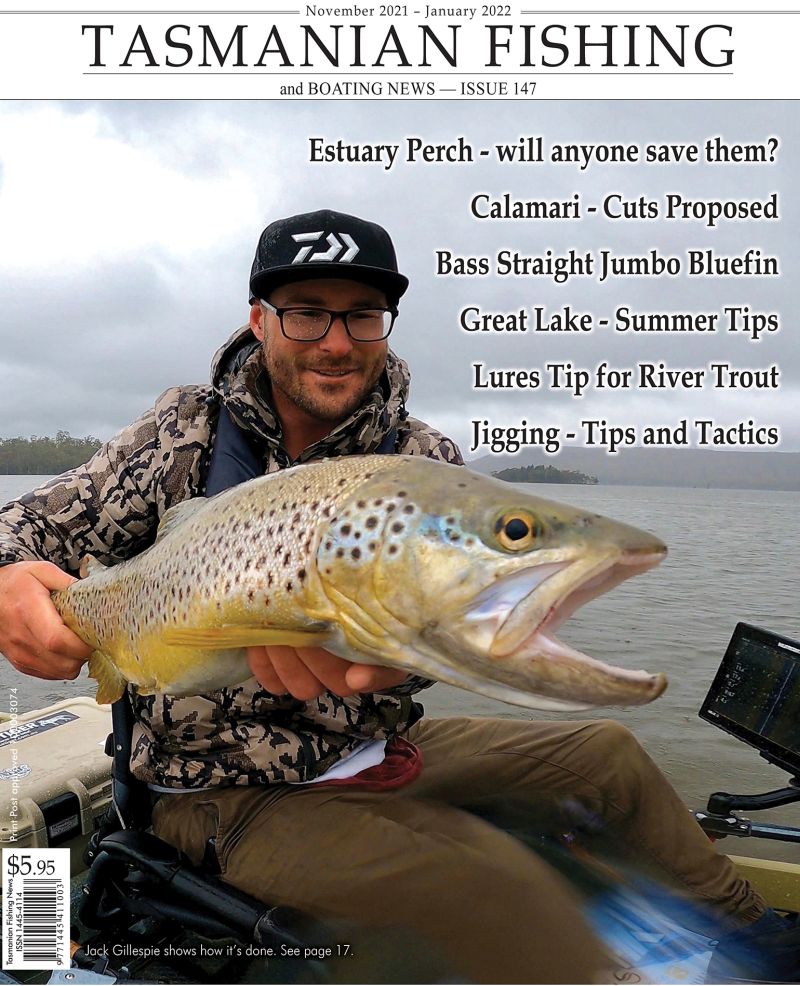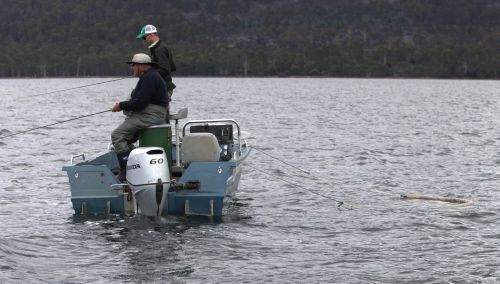From the Archives ...
Sea Run Trout
Mid Sea-Run Season Report
Sea-run trout fishing this year got off to a cracking start in most areas, with the majority of anglers employing nearly every trout fishing technique to secure fish in local estuaries statewide.
Even those anglers fishing the "off-season" lower down in our estuaries for sea-trout commented on the number of fish moving in early August.
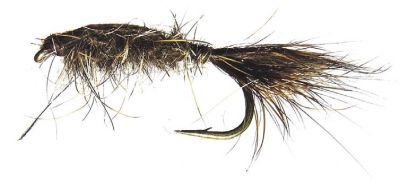 Presented from Issue 112, October 2014
Presented from Issue 112, October 2014
As the Spring bulbs flower, the willows bud up and turn to soft green, I get quite excited about what is to come. Last season was a little tough, but from what I have seen so far this season looks pretty good in the Highlands. Nymphs and dry flies are uppermost in my mind at the moment. For me October means mayflies on the rivers and that means dry fly fishing, which I look forward to.
But hatching mayflies also means nymphs rising through the water column. If I had to pick just one nymph it would be a Hares Ear pattern. Most importantly though is size, colour and shape. Small patterns for the start of the season and as they grown so do my artificials. I believe the nymphs vary widely in colour as well depending on the habitat.
- Written by Stephen Smith - Rubicon Web and Technology Training
- Category: Jan’s Flies
- Hits: 3323
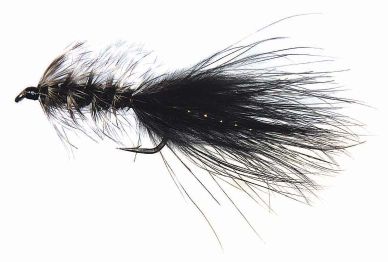 Presented from Issue 111, August 2014
Presented from Issue 111, August 2014
Writing for the start of the season is a delight and full of anticipation. What will the new season bring? As I write this I am finishing a coffee in my front room looking out over Great Lake.
Two parrots are noisily pulling the bark back on a small gum tree in front of the house and I can only assume they are looking for and finding some insects of some sort — perhaps gum beetles are on their menu. I don’t imagine there is too much else around.
- Written by Stephen Smith - Rubicon Web and Technology Training
- Category: Jan’s Flies
- Hits: 3147
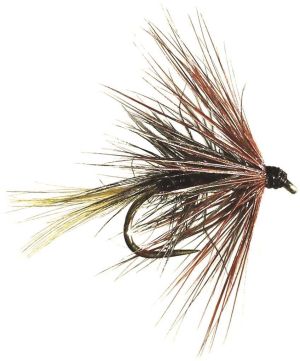 Presented from Issue 110, June 2014
Presented from Issue 110, June 2014
Winter is a time to reflect on the past season and contemplate the new one. In recent articles I mentioned what a hard season it was - especially for fishers of the dry fly. We had some good fishing to hatching stoneflies in November, but after that the best results were usually on wet flies with sinking lines.
I reckon this sort of fishing is hard work, but it certainly gave us some good results. Of course it makes sense, because as we all know eighty percent of a trout’s food is in the water, not on it. So with little surface activity it has been most important to find the depth the fish are at.
- Written by Stephen Smith - Rubicon Web and Technology Training
- Category: Jan’s Flies
- Hits: 4877
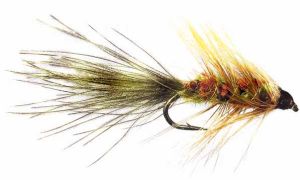 Presented from Issue 109, April 2014
Presented from Issue 109, April 2014
This year’s fishing has certainly sorted the men from the boys - so to speak. The fly fishing sector has seen a tough year, but if the hard work is put in the rewards have come. Dry fly fishing has been tough in most areas - apart from small creeks, shark fishing on Great Lake and Western Lakes. I, like so many others, love to take fish on a dry fly, but if you want to catch trout you need to look at the whole water column. If fishing from a boat a fish finder will give you a pretty good idea of the different lines and weights of flies you need to be effective.
- Written by Stephen Smith - Rubicon Web and Technology Training
- Category: Jan’s Flies
- Hits: 4570
 Presented from Issue 109, April 2014
Presented from Issue 109, April 2014
This year’s fishing has certainly sorted the men from the boys - so to speak. The fly fishing sector has seen a tough year, but if the hard work is put in the rewards have come. Dry fly fishing has been tough in most areas - apart from small creeks, shark fishing on Great Lake and Western Lakes. I, like so many others, love to take fish on a dry fly, but if you want to catch trout you need to look at the whole water column. If fishing from a boat a fish finder will give you a pretty good idea of the different lines and weights of flies you need to be effective.
- Written by Stephen Smith - Rubicon Web and Technology Training
- Category: Jan’s Flies
- Hits: 4283
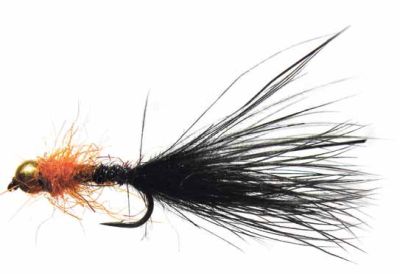 Presented from Issue 108, February 2014
Presented from Issue 108, February 2014
As I write this we are experiencing some very hot weather in the Central Highlands. Prior to this though over Christmas it was cold and extremely windy. On most lakes as it gets hot the fish retreat to cooler waters. I don’t like to go boating on the very rough days, but am happy to give the shore fishing a go.
Just recently Bill and I were fishing the Bronte system and we started with a team of English dries - no fish, then small English wets - no fish. It was hot, so the thinking cap went on and I put a #3 sinking line on and some weighted flies. Bingo, we were into the fish and took a number of nice specimens – mostly on the bead head ‘Streamline Bugger’ point fly.
- Written by Stephen Smith - Rubicon Web and Technology Training
- Category: Jan’s Flies
- Hits: 4431
 Presented from Issue 108, February 2014
Presented from Issue 108, February 2014
As I write this we are experiencing some very hot weather in the Central Highlands. Prior to this though over Christmas it was cold and extremely windy. On most lakes as it gets hot the fish retreat to cooler waters. I don’t like to go boating on the very rough days, but am happy to give the shore fishing a go.
Just recently Bill and I were fishing the Bronte system and we started with a team of English dries - no fish, then small English wets - no fish. It was hot, so the thinking cap went on and I put a #3 sinking line on and some weighted flies. Bingo, we were into the fish and took a number of nice specimens – mostly on the bead head ‘Streamline Bugger’ point fly.
- Written by Stephen Smith - Rubicon Web and Technology Training
- Category: Jan’s Flies
- Hits: 3898
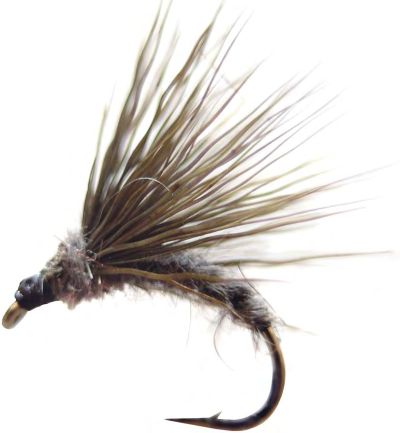 Presented from Issue 107, December 2013
Presented from Issue 107, December 2013
I would like to tell you my thoughts on Arthurs Lake. Many are critical of the numerous small fish, the results of good spawning over the last few years. It does show it is a very healthy system.
If there were few fish there would be complaints as well. And it seems not so long ago anglers were complaining of low levels and no water. As I write this Arthurs is 40mm from full. It has never been that high, and has never spilled.
- Written by Stephen Smith - Rubicon Web and Technology Training
- Category: Jan’s Flies
- Hits: 5489
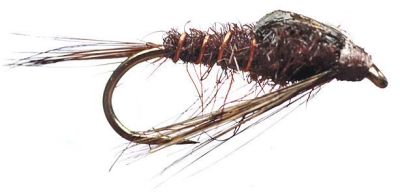 Presented from Issue 106, October 2013
Presented from Issue 106, October 2013
It is time to think nymphs. Numerous trout foods have a nymphal stage as part of their life cycle and these include damselflies, dragonflies, mayflies, stoneflies, caddis and midges. All have different body shapes and colours.
There is no pattern to cover the lot, but I think it is important to get the size and colour correct. The weight depends on what depth the fish are at and as the season progresses the nymphs become larger and more active. Earlier in the season the fish are deeper and as the water warms fish and insects rise in the water column.
- Written by Stephen Smith - Rubicon Web and Technology Training
- Category: Jan’s Flies
- Hits: 7079
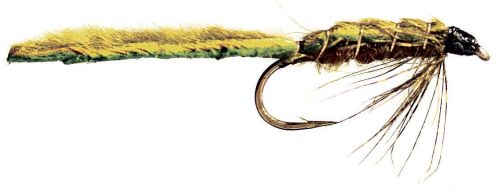 Presented from Issue 105, August 2013
Presented from Issue 105, August 2013
Fishing early season is cold, but it can be very productive.
If you are fly fishing you will almost certainly be wet fly fishing - unless the fish are in very shallow water then a dry fly may work.
- Written by Stephen Smith - Rubicon Web and Technology Training
- Category: Jan’s Flies
- Hits: 5737
Current TFBN
Click above for current issue content. The current issue of TFBN is extensive and topical. In Tackle Stores, Newsagents and by subscription.
Delivered to your door for $48 for 2 years (8 issues). To subscribe, send Mike $48 via www.paypal.com.au . (Basic instructions are here) The email is at Contact Us. Your address will be included from PayPal.
Or phone Mike with your c/c handy on 0418129949
Please ensure your details are correct, for Mike to organise delivery.
TFBN Newsletter Sign up Form
Why not submit an article ?
When you have finished for the day, why not have a brag about the ones that didn't get away! Send Mike an article on your fishing (Click here for contact details), and we'll get it published here. Have fun fishing - tasfish.com
Category Descriptions
Here is a list of all of the Article Categories. The number in Brackets, eg (13) is the number of articles. Click on Derwent River and all articles relating to the Derwent will be displayed in the central area.
Articles by Category
-
Rivers (3)
-
Saltwater and Estuary Fishing (149)
-
Kayak Fishing (34)
-
Lakes (1)
-
Great Lake (62)
-
Lake Leake (52)
-
Woods Lake (16)
-
Lake Augusta (11)
-
Huntsman Lake (13)
-
Lake Pedder and Gordon (10)
-
Lake Dulverton (5)
-
Lake Crescent (6)
-
Tooms Lake (10)
-
Lake Mackintosh (2)
-
Lake Barrington (5)
-
Little Lake (8)
-
Meadowbank Lake (5)
-
Lake King William (7)
-
Lake St Clair (2)
-
Western Lakes (12)
-
Arthurs Lake (35)
-
Lake Echo (7)
-
Four Springs (54)
-
Lake Sorell (7)
-
Lake Burbury (6)
-
Other Lakes (57)
-
Brushy Lagoon (18)
-
Little Pine Lagoon (5)
-
Penstock Lagoon (16)
-
Brumbys Creek (7)
-
-
Events (48)
-
Estuary Fishing (0)
-
Coastal Catches (46)
-
Super Trawler (46)
-
IFS, DPIPWE, MAST and Peak Bodies (435)
-
Commercial Interests (98)
-
Other (24)
-
TFBN Back Issues (8)
-
Fly Fishing (67)
-
Trout Fishing (252)
-
Meteorology and Weather (8)
-
Jan’s Flies (50)
-
Tuna Fishing and other Game Fishing (86)
-
Cooking Fish (19)
-
Fishing Information (1)
-
Fishing Books (8)
-
Videos (5)
-
Tackle, Boats and other Equipment (146)
-
World Fly Fishing Championship 2019 (2)
Popular Tags
windyty.com
Visit https://www.windyty.com/
Rubicon Web and Technology Training
Hello everyone, I thought it would be a good time to introduce myself.
My name is Stephen Smith and I have been managing the website tasfish.com since May 2009.
It has been an epic journey of learning and discovery and I am indebted to Mike Stevens for his help, support and patience.
I am developing a new venture Rubicon Web and Technology Training ( www.rwtt.com.au ). The focus is two part, to develop websites for individuals and small business and to train people to effectively use technology in their everyday lives.
Please contact me via www.rwtt.com.au/contact-me/ for further information - Stephen Smith.
From the Archives ... (last chance)
Trout tips - from tackle shops
Presented from Issue 105, August 2013
We did a bit of a runaround Tasmania’s tackle stores to see what their tips for the first month or so of the tackle season were. We asked what the top three places to fish were, plus lures, flies, baits and a few other things.
Here is a rundown on their answers Whenever, and wherever you fish - anywhere, or for any fish in the world - ask the locals and especially ask at the local tackle store. They know what was caught today, yesterday and on what.

